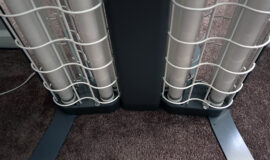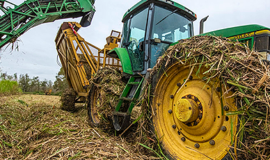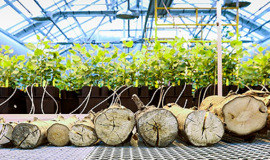Wind Turbine Blades as Useful Waste Material
Nowadays, implementation of wind energy with wind turbines is witnessing huge growth. More and more wind turbine systems are built all around the world. But when the wind turbine reaches the end of its work life, its blades are difficult to recycle.
Wind turbines have a life expectancy of 20 years, so many of the older wind turbine systems will have to be dismantled in the foreseeable future. According to a study from the University of Cambridge from 2017, since wind turbine installation is on the rise, their blades are estimated to account for 43 million tonnes of waste in 2050. The blades of the turbines are huge and heavy, and that’s why it is difficult to grind them and reuse them. They are made from a mixture of glass and plastic fibers that are difficult to separate, so most of the blades end up in landfills.
In theory, turbine blades are 100% recyclable. Some technologies use blades as feedstock in cement co-processing and the “granulates” of fiberglass and other blade materials with the proper grinding can be used for a range of new products. In Ireland for example, large turbine blades are used to make local pedestrian and bicycle paths and bridges. However, the recycling from these technologies is just a small step in the recycling process.
To solve the problem with reusing turbine blades, it is essential to form cross-sector partnerships. With the proper cooperation, we can speed up the transition to a circular economy for blades and other reusable materials by solving two huge problems: how to make a widely acquirable recycling infrastructure and how to create a market for the processed outputs.
Building up the recycling infrastructure is very important but it is only the first step to completing the waste recycling challenge. A market for the recycled blades and other components of wind turbine system needs to be established to attract investments. The wind industry should also take a part in this, supporting the use of recycled materials into production of new blades or new products.
Another way of reducing waste is to prevent the waste before it occurs by implementing reusable materials in the production of wind turbines and also using less material in general. For example, the company LM Wind Power is using recycled polyethylene terephthalate as a core material in blades.
Another example of moving towards a waste-free future is Vestas Wind Systems A/S, a wind turbine design, manufacturing and installation company, announced that they would be a company that produces zero waste wind turbines by the year 2040. The company plans to increase recyclability over the next 20 years through cooperation with its partners along the supply chain to avoid landfilling of its products.
Seeing new partnerships forming gives us hope that in a couple of years, we would live in a greener, waste-free world. But still, we have a lot more to learn. The wind turbine manufacturers can assure that more sustainable products are being made and together with cross-sector partners they can create a complete recycling infrastructure.





